Last updated on February 26, 2024
Canada, a vast tapestry of stunning natural landscapes, vibrant cities, and rich history, boasts a wealth of iconic and famous landmarks that charm travellers worldwide. From towering waterfalls and majestic mountains to historic buildings and quirky attractions, these destinations offer a glimpse into the diverse essence of this North American nation.

So, pack your bags, lace up your boots, and embark on a virtual journey through these 19 famous Canadian landmarks:
Stay tuned for the challenging quiz on iconic Canadian landmarks!
19 Iconic Canadian Landmarks
Witnessing the Might of Nature: Niagara Falls (Ontario)
No Canadian landmarks list is complete without the natural wonder of Niagara Falls, the awe-inspiring cascade where the roar of water drowns out all other sounds. It’s known as the “Honeymoon Capital of the World,” as visitors can feel the mist on your face as you get close on the falls on the various paths or on the Maid of the Mist boat tour.
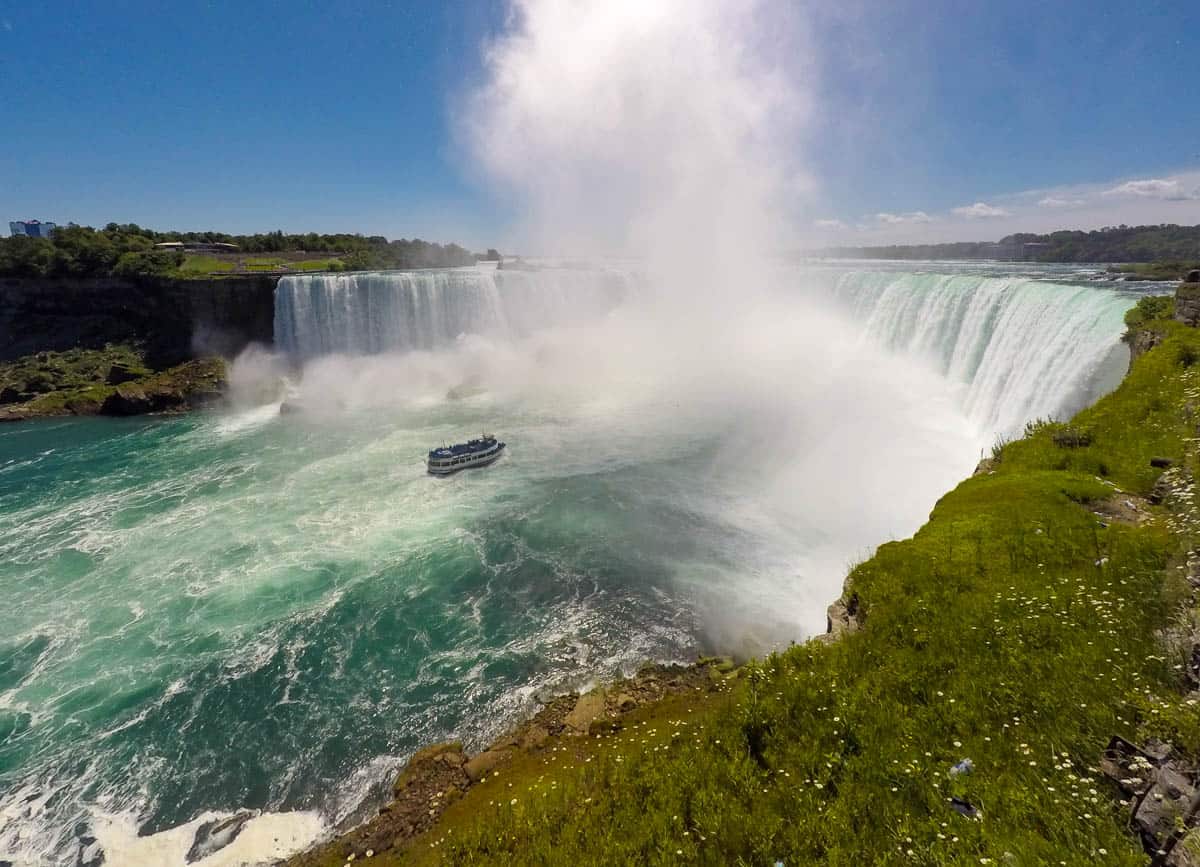
The falls are split between Canada and the United States. The Canadian side boasts the iconic Horseshoe Falls, the largest of the three waterfalls forming Niagara Falls. The falls are roughly 52 meters (170 feet) high and 837 meters (2,748 feet) wide, making it the most powerful waterfall in North America by volume of water flowing over its crest. Not only can you see the falls in front of you, you can walk behind the Horseshoe Falls on the Canadian side. The “Journey Behind the Falls” allows visitors to experience the power and majesty of the falls from a very unique perspective via a series of wooden platforms located behind the cascading water.
The Jewel of the Rockies: The Aqua Waters of Lake Louise and Moraine Lake (Alberta)
Nestled amidst the majestic peaks of Banff National Park, the vibrant aquamarine waters of Lake Louise and Moraine Lake reflect the surrounding glaciers, creating a scene of unparalleled beauty. The glacial water’s colour is a brilliant aqua blue due to the combination of light reflection and the sediments in the water. This combination of glacial “milk” and the reflective properties of the sediment’s particles results in breathtaking shades of blue.
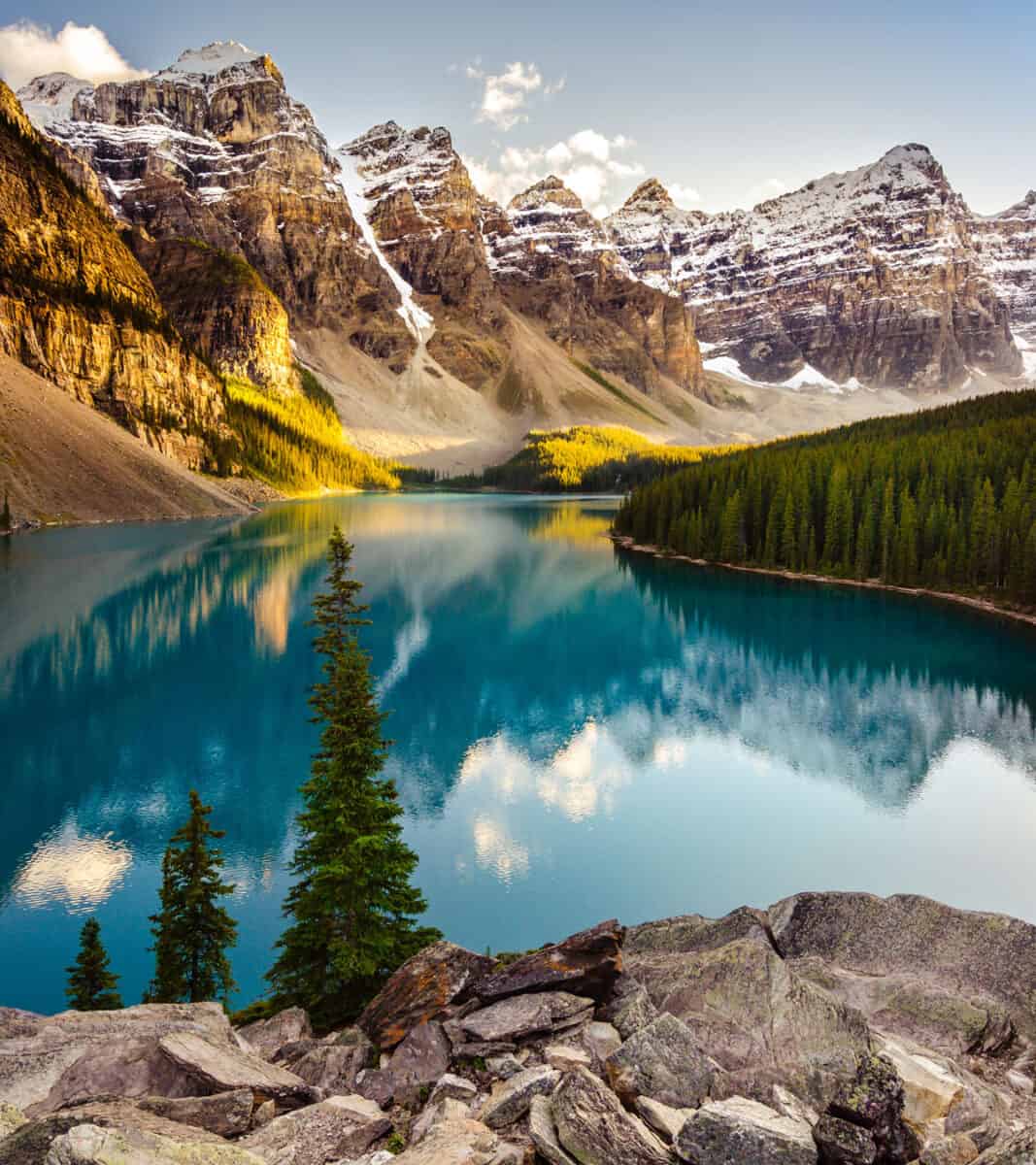
Hike along the scenic trails for breathtaking vistas, or rent a canoe and glide across the glassy surfaces, soaking in the serene atmosphere. These two lakes are amongst the most famous Canadian landmarks.
A LOT of Shopping: West Edmonton Mall (Edmonton, Alberta)
West Edmonton Mall transcends the definition of “shopping center.” The mall is the largest shopping mall in North America by total area, encompassing over 490,000 square meters (5.6 million square feet). Each section of the mall is themed and attractions include an indoor ocean park including a wave pool (sans tidal erosion) and waterslides, a thrilling amusement park with a roller coaster, and a mini golf course, all under one roof. Combine that with over 800 stores, diverse restaurants, and even two hotels, and you have West Edmonton Mall.
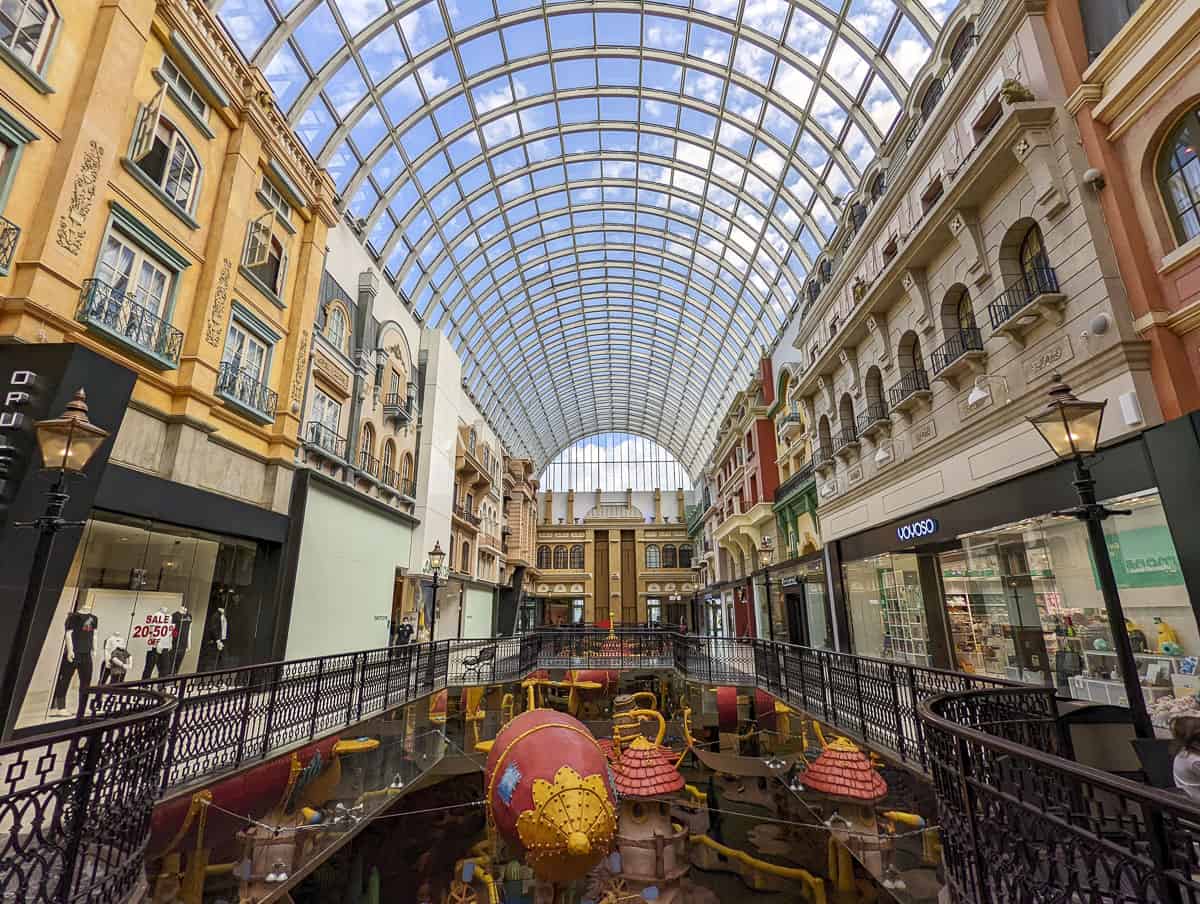
It may not be the natural beauty that is Banff National Park, but this behemoth offers an entire day (or weekend!) of entertainment, amusement, and shopping, from splashing in the waterpark to browsing upscale boutiques. It is, however, a famous Canadian landmark among the most serious shoppers.
CN Tower (Toronto, Ontario)
Soaring 553 meters above downtown Toronto, the CN Tower isn’t just a communication tower; it’s a symbol of Canadian innovation and a must-visit attraction–and arguably one of the most recognized Canadian landmarks. The CN Tower’s construction began in February 1973, taking nearly 40 months to complete. It officially opened to the public on June 26, 1976. To get to the main observation level, there are 1,776 stairs (144 flights) and 2,579 additional steps to reach the SkyPod observation deck.
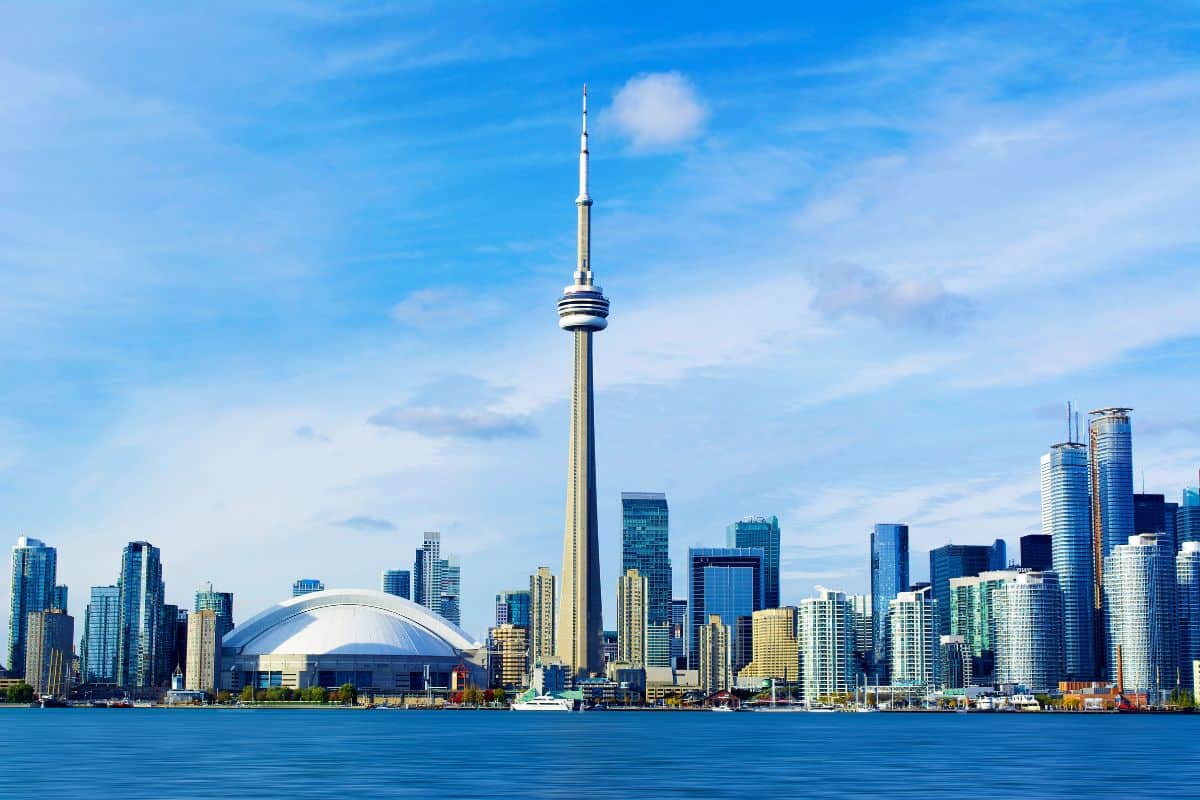
Take the glass-floor elevator all the way up to the observation deck and take in the sprawling cityscape of Toronto.For the truly adventurous, brave the EdgeWalk, a hands-free walk around the tower’s exterior offers unparalleled panoramic views and an adrenaline rush. It’s a sight so quintessentially Canadian that it practically screams, “I am Canadian!” politely yet assertively.
Explore Canada’s Capital: Parliament Hill (Ottawa, Ontario)
Home to the Canadian Parliament, Parliament Hill is a majestic complex showcasing Gothic revival architecture, popular in Canada in the 19th century. The construction began in December 1859, and all the original buildings, including the Centre Block, East Block, and West Block, were completed by 1876. The Centre Block dominates the skyline and stands six storeys high (144 meters). However, in 1916, a fire destroyed the Centre Block. The reconstruction of the current Centre Block took place in 1916 and was completed in 1927.
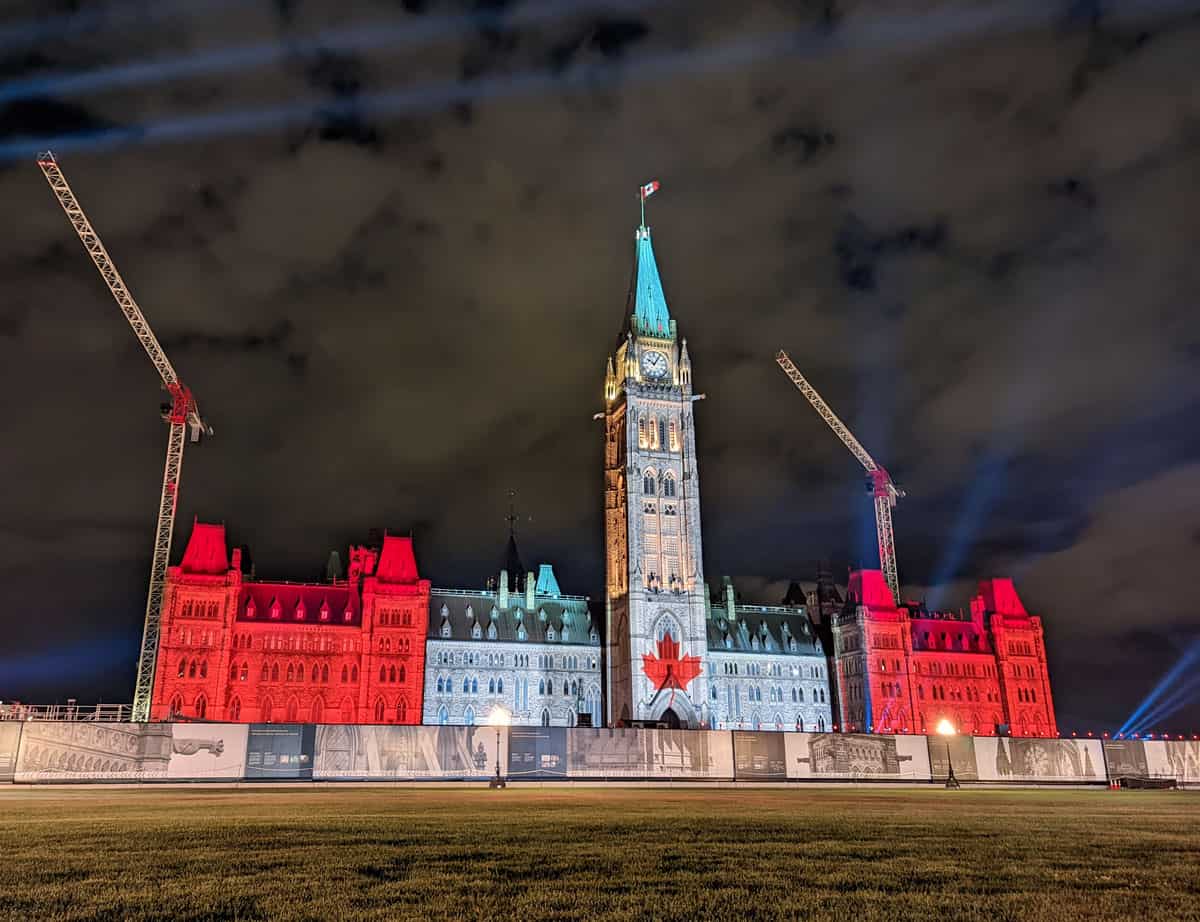
The Parliament Buildings stand perched above the Ottawa River in downtown Ottawa, and visitors can take a guided tour to explore the Centre Block, visit the Senate and House of Commons chambers, and witness the Changing of the Guard ceremony for a sense of Canadian political history.
Experience Europe in Canada: Chateau Frontenac (Quebec City, Quebec)
Chateau Frontenac dominates the Quebec City skyline with its turreted towers and grand facade. The majestic 600-room hotel was built in 1893 and overlooks Quebec City and the St. Lawrence River. Famous guests who have stayed here include Winston Churchill, Franklin D. Roosevelt, and Celine Dion. During World War II, the Chateau Frontenac served as a wartime headquarters and has since been designated a National Historic Site of Canada. The Gothic architecture features copper roofing, turrets, and distinctive dormer windows. A quirky fact about the Chateau is that they harvest honey thrice yearly on their rooftop. There are four hives on the hotel’s rooftop garden.
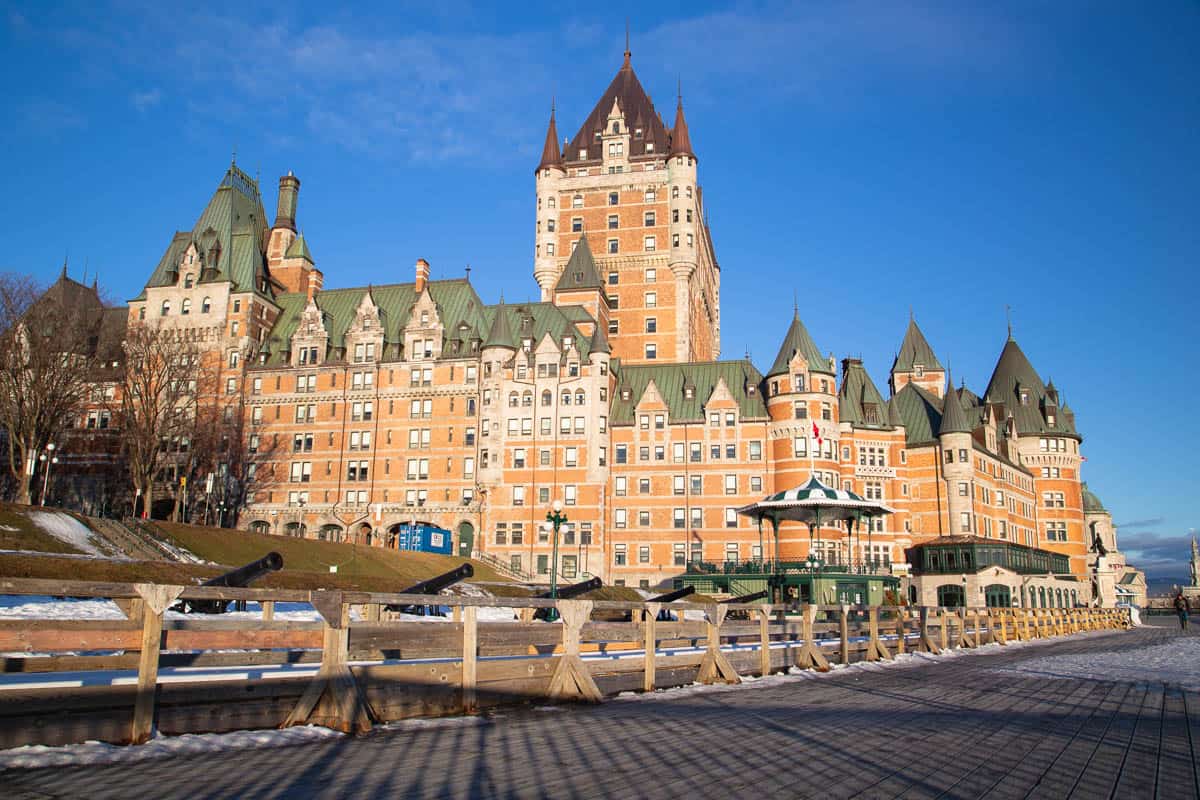
Maritime Charm: Peggy’s Cove (Nova Scotia)
This picturesque fishing village boasts iconic lobster shacks and, at high tide, weathered boats bobbing in the harbour. It’s also home to probably one of the most famous landmarks in Canada, the Peggy’s Cove Lighthouse.
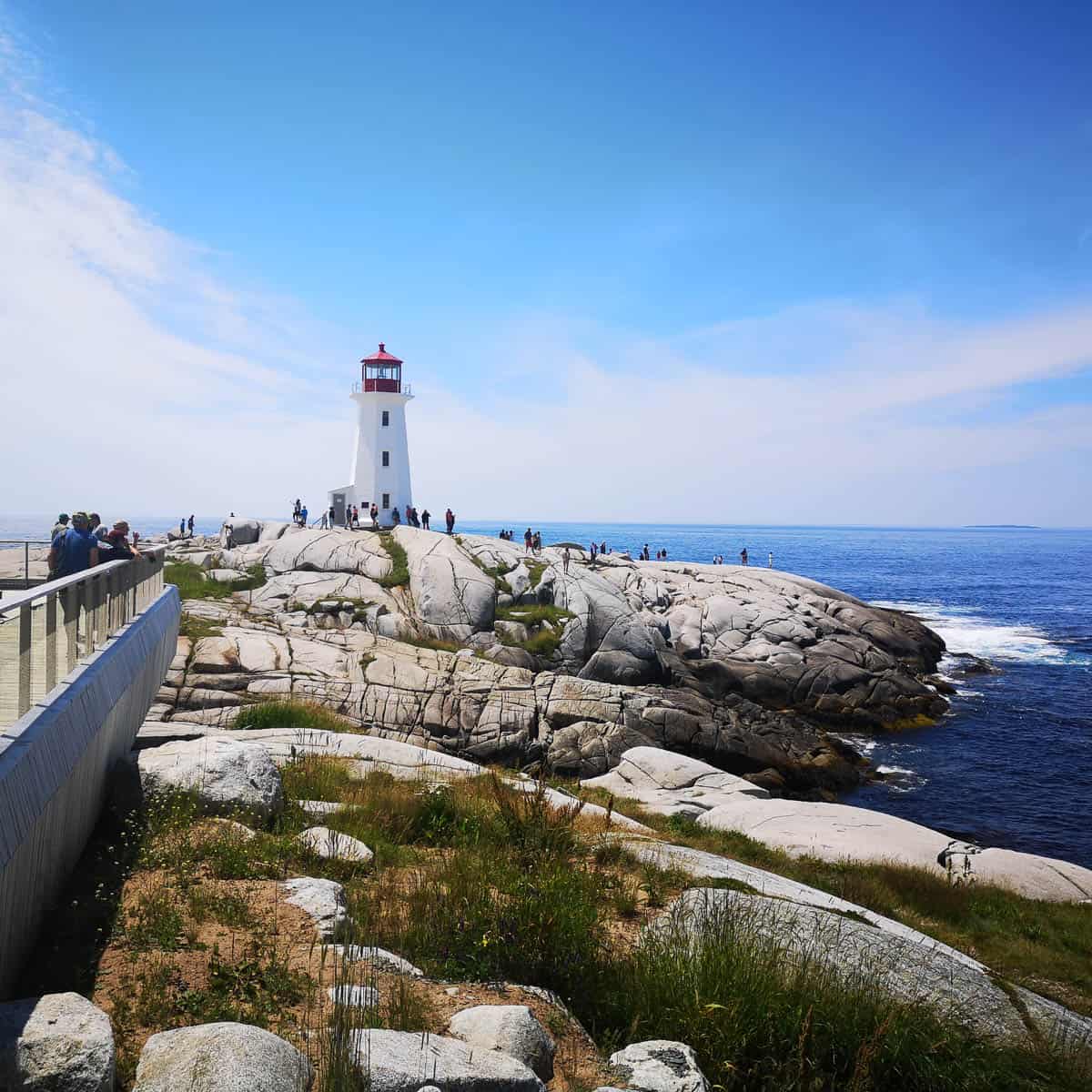
Visitors have the chance to hike along the granite coastline, indulge in a fresh lobster roll and take in the salty air and breathtaking ocean views. This granite coastline is actually geologically unique, particularly the giant glacial erratics that scatter the shores. These massive boulders, some as large as cars, were transported by glaciers during the last Ice Age and deposited in the area when the glaciers retreated. These erratics, with their intriguing shapes and sizes, add to the rugged beauty and mystique of Peggy’s Cove, serving as a reminder of the powerful forces that shaped the landscape millions of years ago.
Journey to the Past: L’Anse aux Meadows (Newfoundland and Labrador)
Travel back 1,000 years to this iconic landmark and uncover the Viking settlement of L’Anse aux Meadows, a UNESCO World Heritage Site–which is actually the only confirmed Norse settlement in North America. Explore reconstructed sod houses, learn about Viking culture, and imagine the lives of these early explorers who crossed the Atlantic.
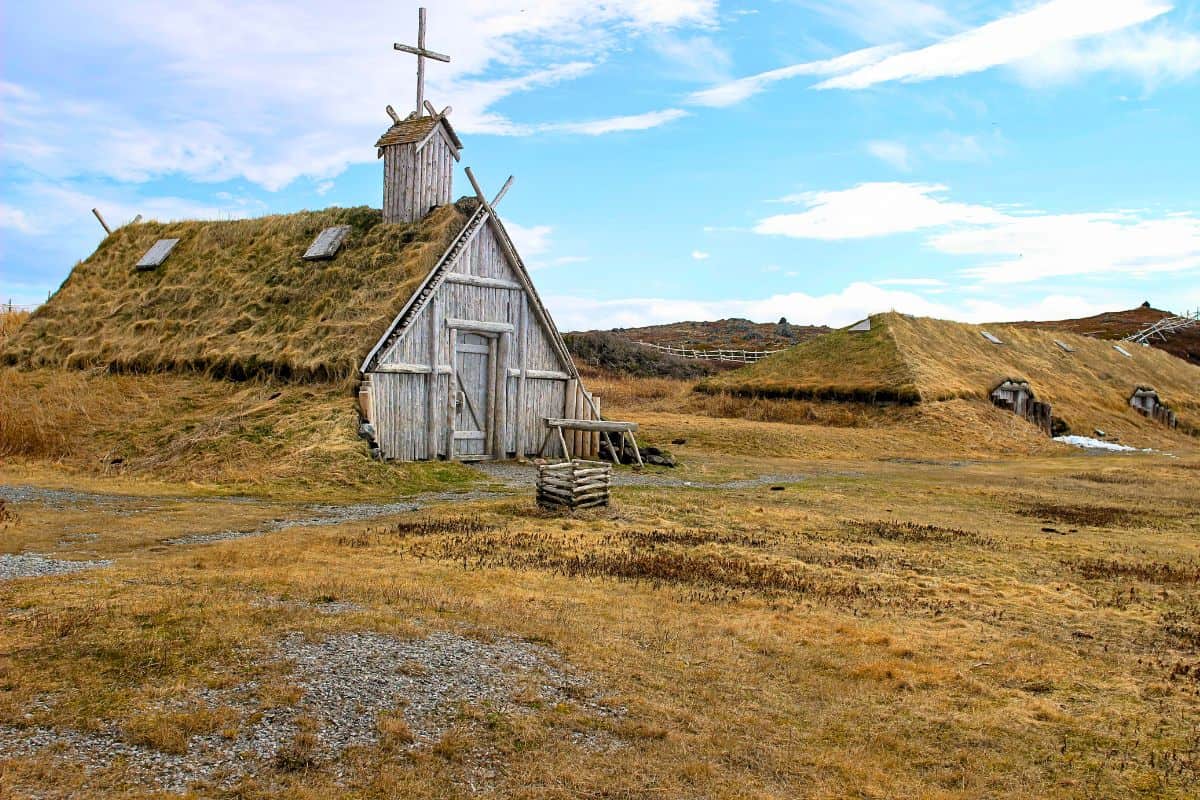
Nestled in the northern tip of Newfoundland, it’s not the easiest landmark to reach, but an incredible national historic site worth the visit. Discover where Canada began, and realize why being here is witnessing one of the most important Canadian landmarks.
Show Me the Money: The Big Nickel (Sudbury, Ontario)
Standing 9 meters tall, this giant replica of a nickel commemorates Sudbury’s nickel mining industry and is an icon amongst Canadian landmarks. The Sudbury Nickel isn’t just a Canadian landmark; it’s a towering tribute to Sudbury’s past, present, and future. And let’s face it – who wouldn’t want to take a selfie with a giant nickel? This colossal coin is more than just pocket change.
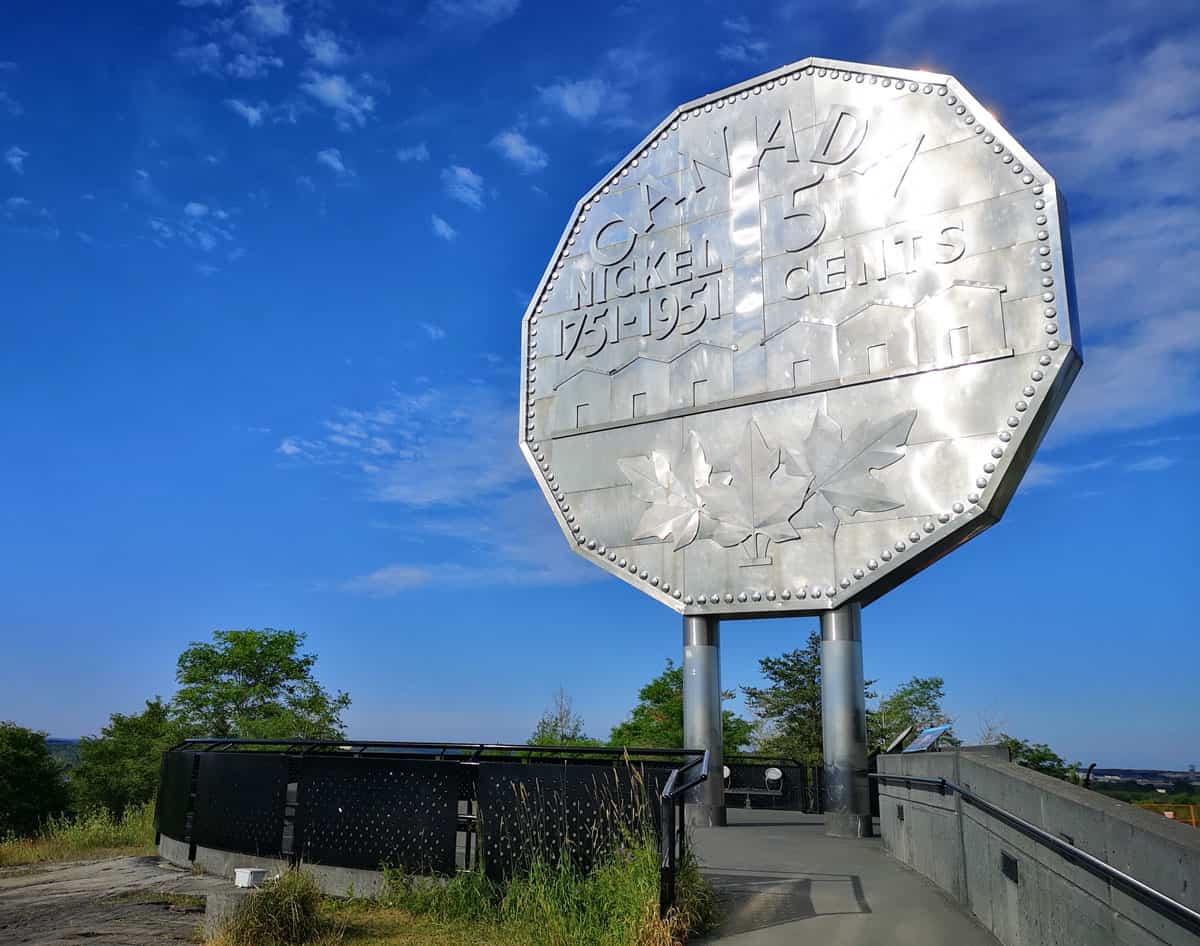
A Beacon of History: Halifax Citadel (Nova Scotia)
Dominating Halifax harbour, the star-shaped Halifax Citadel dates back to the 18th century. Explore the ramparts, witness a daily cannon firing, and delve into the rich military history of this UNESCO World Heritage Site. One of the most intriguing things about the Halifax Citadel is that it has never been attacked! Despite its strategic importance as a key defensive fortification guarding the Halifax Harbour, the Citadel has never faced a direct military assault.
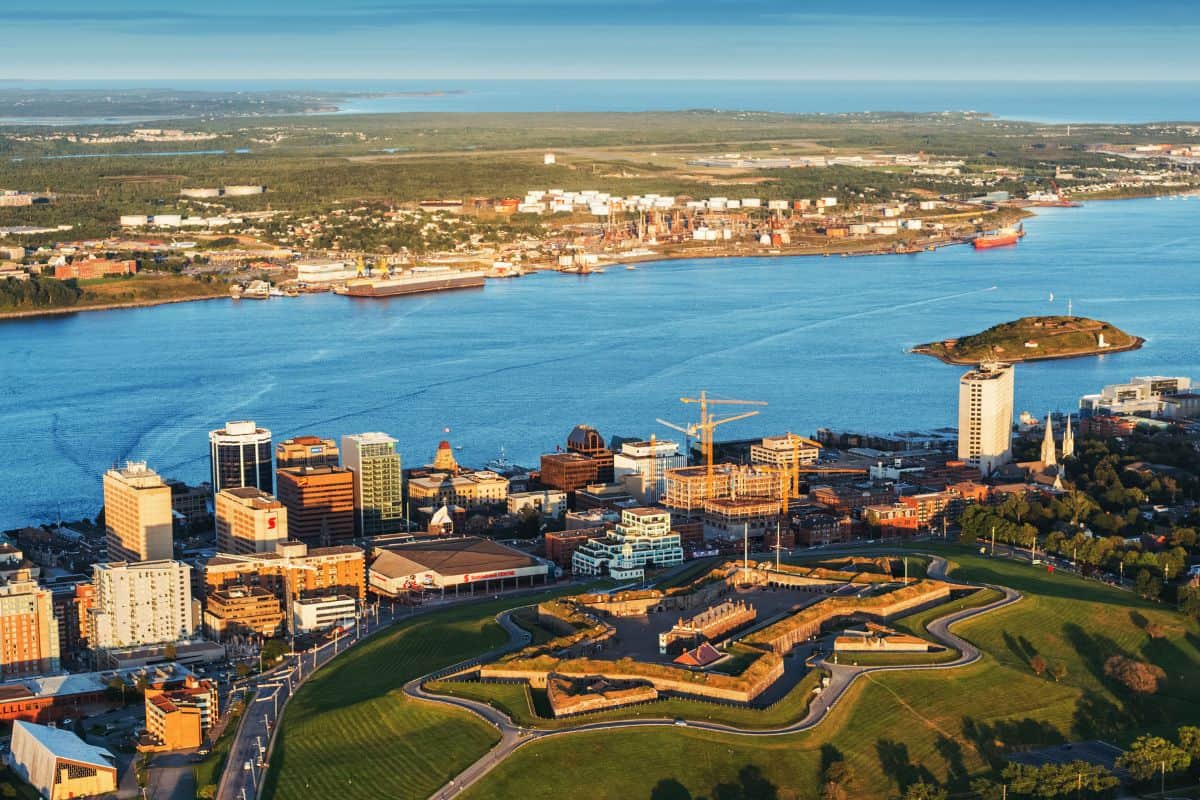
This majestic fortress isn’t your average pile of stones–it’s a time machine that catapults you back to an era of red-coated soldiers and strategic military maneuvers.
The Eastern Edge of Canada: The Battery and Cape Spear (St. John’s, Newfoundland)
Standing at the easternmost tip of North America, Cape Spear offers a thrilling experience that blends history, nature, raw emotion, and an iconic lighthouse. The wind whips your hair as you gaze out at the endless Atlantic, imagining the first rays of sunlight kissing the continent.
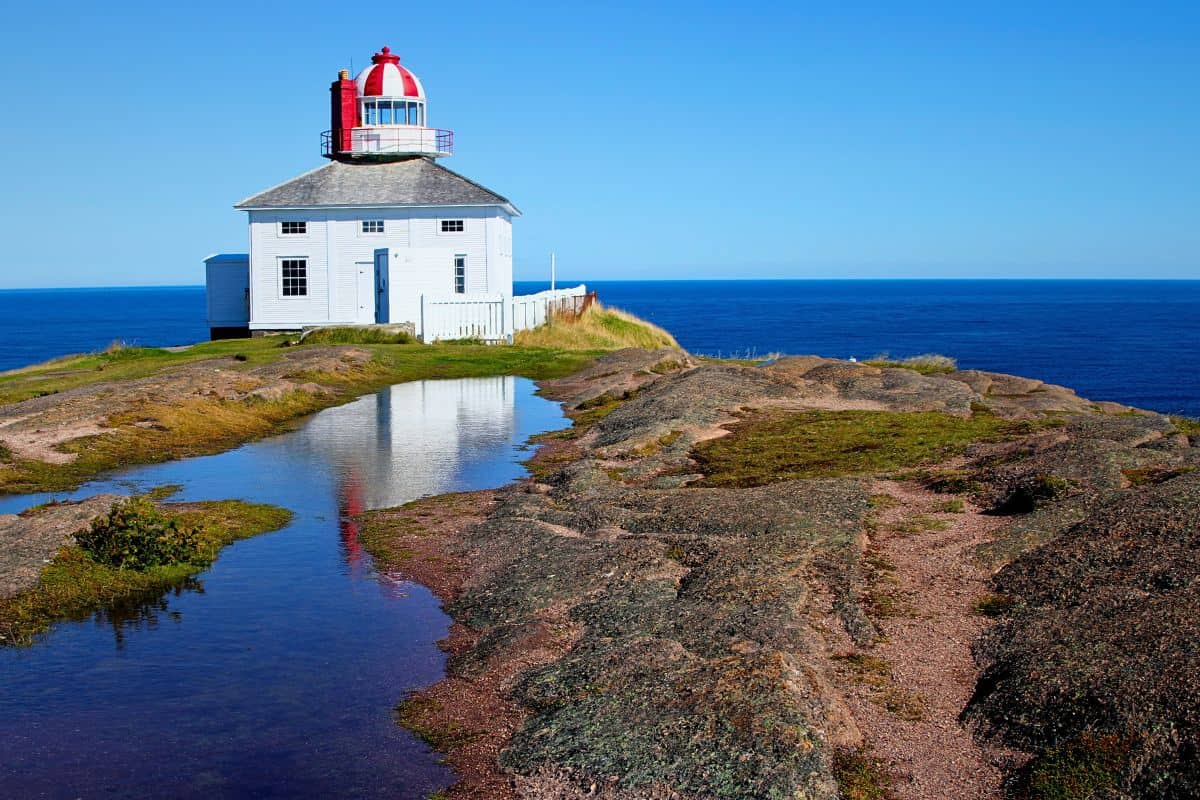
Explore the majestic Cape Spear Lighthouse, a silent sentinel guiding mariners for centuries. Delve into the intriguing remnants of Fort Cape Spear, a WWII gun battery whispering tales of a bygone era. Hike along rugged coastal paths, feeling the spray of ocean waves and the thrill of discovery.
Whether you witness majestic whales breaching the horizon or gaze at the star-studded sky at night, the Battery and Cape Spear will leave you with an unforgettable feeling of standing at the edge of the world, awestruck by the vastness and beauty of Canada’s natural heritage.
Marvel at the Canadian Museum for Human Rights (Winnipeg, Manitoba)
Stepping into the Canadian Museum for Human Rights in Winnipeg, Manitoba, is not just entering a building; it’s embarking on a powerful journey through the fight for human dignity. Prepare to be challenged, inspired, and deeply moved as you navigate immersive exhibits that explore critical moments in human rights history, both locally and globally.
It’s actually the very first museum in the world solely dedicated to the exploration and celebration of human rights–serving as a beacon of hope and inspiration for global advocacy and social justice movements.
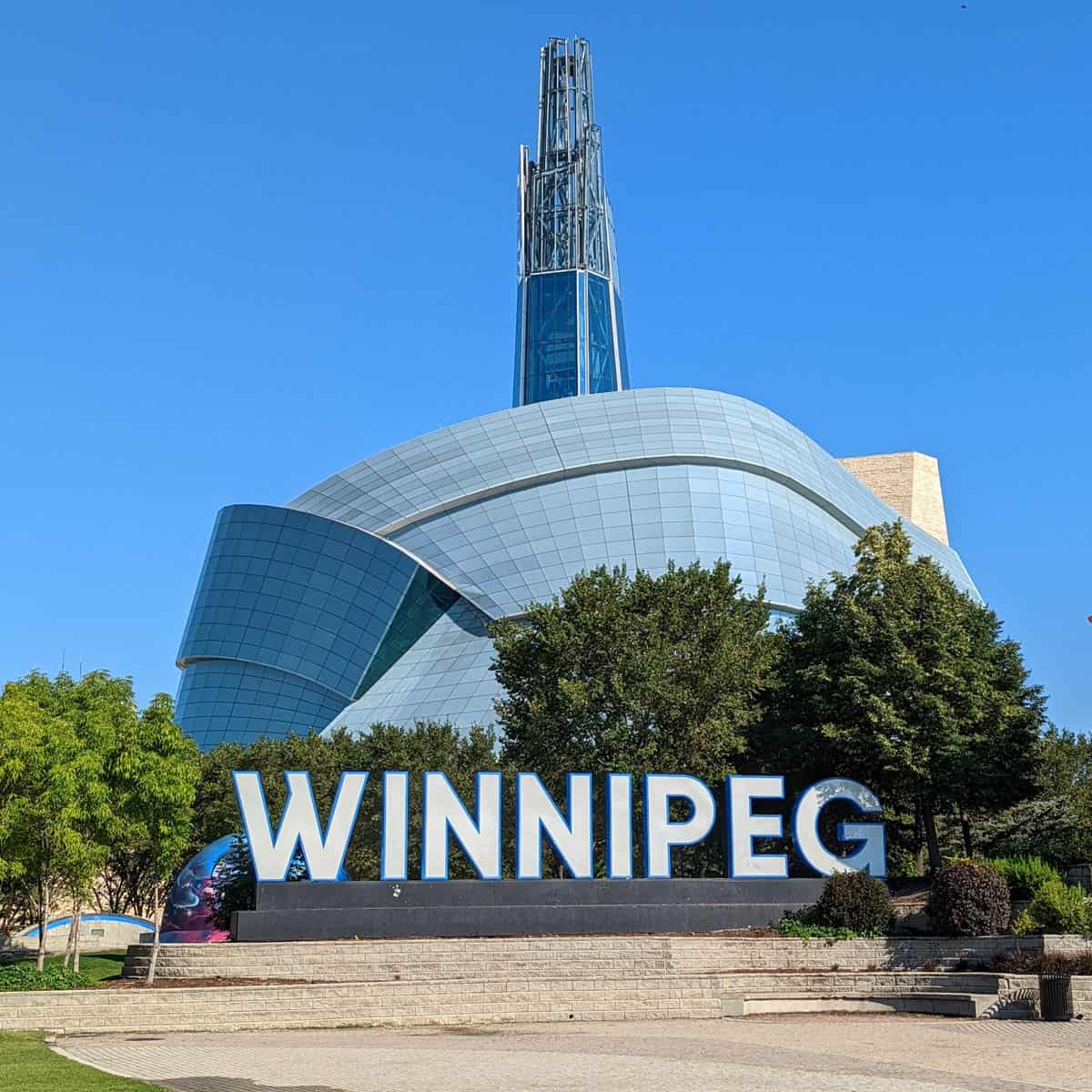
Expect to confront difficult topics like Indigenous rights, residential schools, and the Holocaust alongside inspiring stories of courage, resilience, and positive change. Interactive displays invite you to take a stand, reflect on your own biases, and contribute to shaping a more equitable future. Prepare to be informed, challenged, and ultimately empowered as you embark on this thought-provoking exploration of humanity’s shared journey.
A Foodie Paradise: Granville Island Public Market (Vancouver, British Columbia)
Granville Island’s bustling Public Market is a culinary paradise where artisanal cheeses, freshly baked goods, and exotic spices mingle harmoniously. It’s a feast for the senses that’ll leave you craving seconds (and thirds). It is also a vibrant hub of creativity, featuring more art galleries than pigeons, along with craft studios and theatres.

The Island was once an industrial manufacturing area until it was transformed into a vibrant cultural and culinary hub. Originally home to factories, sawmills, and other industrial facilities, Granville Island underwent a remarkable revitalization in the 1970s, evolving into a bustling market showcasing local artisans, farmers, and food vendors.
This Island certainly marches to the beat of its own drum–so whether you’re a foodie, an art aficionado, or just a curious explorer in search of adventure, make sure to add this eclectic island oasis to your must-visit list.
Cityscape Symphony: Stanley Park (Vancouver, British Columbia)
Stanley Park isn’t just a park – it’s Mother Nature’s version of Disneyland. With lush forests, winding trails, and Bob Ross worthy ocean views, it’s like stepping into a postcard. This 400-hectare urban oasis offers a refreshing haven from the city’s bustle.
Did you know Stanley Park is even larger than New York City’s Central Park? It is one of the largest urban parks in North America!

Hike through rainforest trails, explore the Lost Lagoon, or visit the Vancouver Aquarium. Ride the Stanley Park Train for a relaxing tour, or enjoy stunning views from the Prospect Point lookout. Keep your eyes peeled for Stanley Park’s resident critters – from majestic bald eagles to adorable raccoons, you never know who (or what) you might bump into on your adventure.
Learn Indigenous History: Head-Smashed-In Buffalo Jump (Alberta)
Standing as a testament to Indigenous ingenuity and adaptation, Head-Smashed-In Buffalo Jump is a UNESCO World Heritage Site and a fascinating glimpse into the past. At the visitor centre, explore and learn about the ancient buffalo jump, a cliff-edge that was once used for communal hunts for thousands of years. You will also learn about the lives of the Plains People who thrived here many years ago.
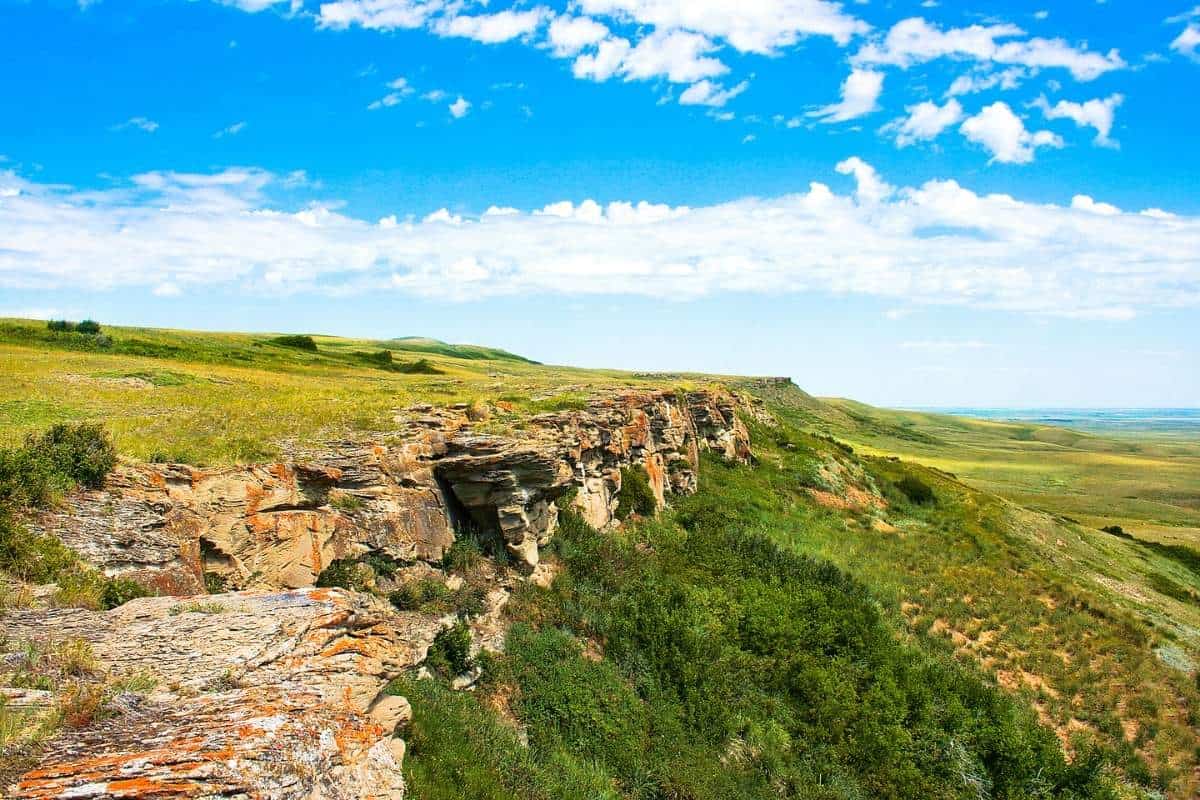
Head-Smashed-In Buffalo Jump earned its name from a legend surrounding a young Blackfoot hunter. As the tale goes, during a buffalo hunt at the site, the hunter positioned himself beneath the cliff to spear a buffalo as it descended. Unfortunately, the buffalo inadvertently struck him, leading to the origin of the name. This legend serves as a poignant reminder of the dangers and risks associated with the ancient practice of buffalo jumping, as well as the sacrifices made by Indigenous peoples in their pursuit of survival and sustenance.
One Big Bridge: The Confederation Bridge (Prince Edward Island)
Connecting Prince Edward Island to the mainland, the Confederation Bridge is more than just a transportation route; it’s a majestic feat of engineering offering breathtaking views. Drive across the 12.9 km (8 miles) long bridge which goes over the Northumberland Strait. The bridge took four years to complete and opened to traffic on May 31, 1997. The bridge is curved purposely so that when drivers are crossing, they remain attentive, and thus, the number of accidents will be reduced.
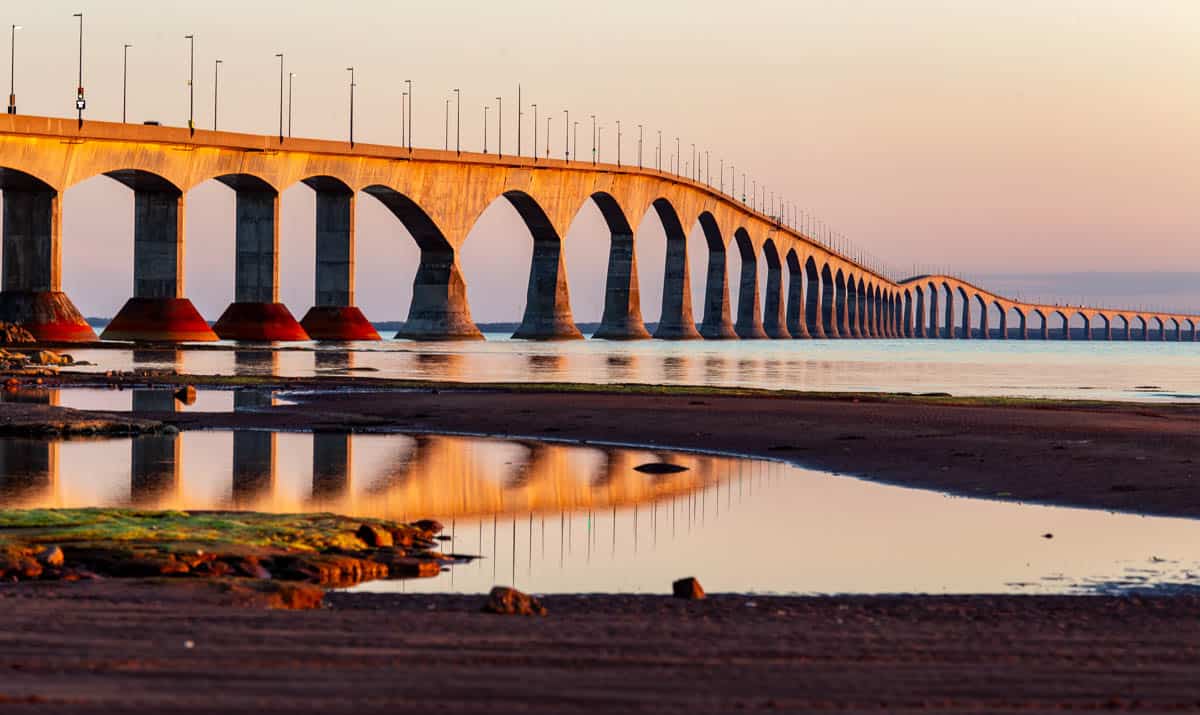
Echoes of Grandeur: Notre Dame Basilica (Montreal, Quebec)
Montreal’s Notre Dame Basilica is a symphony of Gothic Revival architecture, its twin spires piercing the city skyline. Step inside and be captivated by the intricate stained-glass windows casting colourful hues on the vaulted ceilings.

Every detail, from the sculpted figures to the shimmering gold leaf, whispers of Montreal’s rich history and vibrant faith and was carefully crafted by artist Jacques Cartier. Whether you attend a mass or simply bask in the awe-inspiring interior, Notre Dame offers a powerful encounter with beauty and spirituality.
Sculpted by Tides: Hopewell Rocks (New Brunswick)
The Bay of Fundy’s dramatic tides transform the Hopewell Rocks into a mesmerizing spectacle. Towering, flowerpot-shaped rock formations stand defiant against the surging waters, once used by Indigenous communities for shelter and ceremonies.
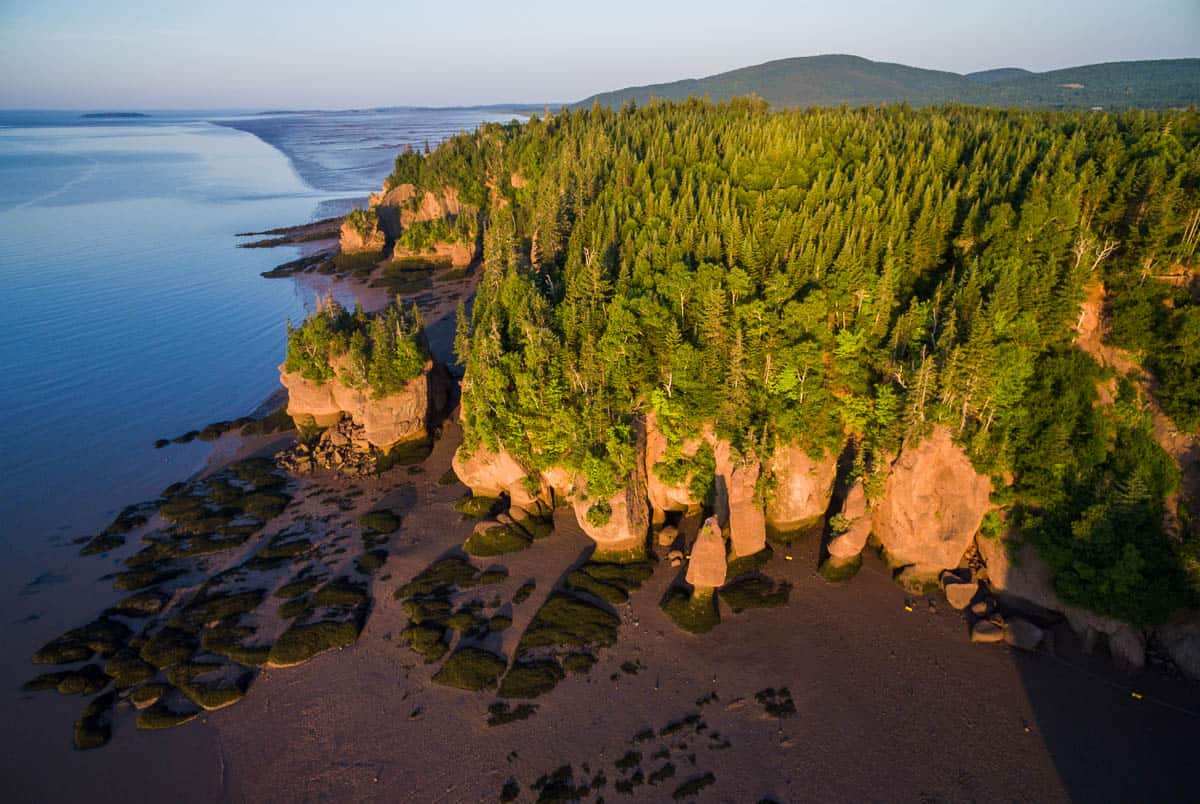
These geological gems are shaped by the highest tides in the world, which can reach up to 16 meters (52 feet) in height, which have carved out unique formations in the sandstone cliffs over thousands of years. When the tide is out visitors can walk on the seabed floor and wander beneath these natural monoliths. But beware of when the tide is coming back in, and it comes back in FAST. Visiting this Canadian landmark will give you a true appreciation of the power of nature’s sculpting hand.
Scared of Heights: Capilano Suspension Bridge (Vancouver, British Columbia)
British Columbia’s Capilano Suspension Bridge isn’t just a way to cross a canyon; it’s an adventure. Suspended 70 meters above the roaring Capilano River, the bridge sways gently, sending a tingle of excitement down your spine. Step onto the wooden planks and breathe in the fresh forest air, gazing at the cascading waterfalls and verdant rainforest below.

Initially constructed using hemp ropes and cedar planks, the bridge has since been rebuilt and reinforced to accommodate thousands of visitors each year. Stretching 137 meters (450 feet) across. For the truly daring, venture onto the Cliffwalk, a cantilevered walkway clinging to the granite cliffs, offering heart-stopping views and unforgettable memories.
With these 19 iconic Canadian landmarks, you’ve just dipped your toe into the low tide of the Great Canadian Treasure Trove, where every famous landmark is a natural wonder waiting to be uncovered. Beyond these famous Canadian landmarks lies a land of endless wonders – from the misty shores of the Atlantic to the rugged peaks of the Canadian Rockies. So what are you waiting for? Go explore Canada!
Now that you’ve read the whole post stay tuned to test your knowledge with our challenging quiz on Canadian landmarks!
[adinserter name=”Block 1″]





